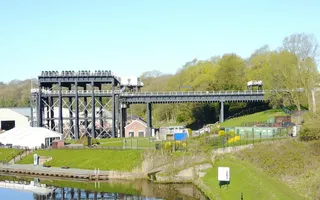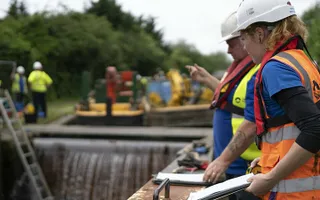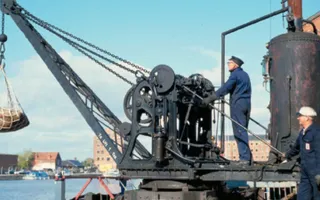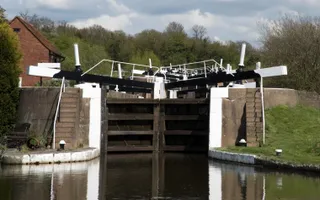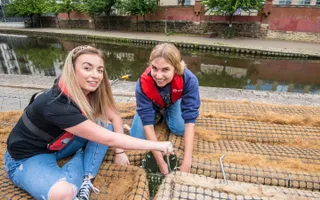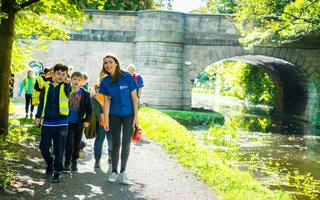Engineers invented locks as a way to boats up and downhill. If the hill was big, they might need to build more than one lock.
To take a boat uphill through the locks, we need to drain the water out of the lock so that we can open the gates and let the boat in. To do this, we open some small doors in the gates. These are called paddles. Once the boat is in the lock, we can close the gates and open the paddles at the top end of the lock. This time, there are paddles in the lock gates and in the ground at the side of the lock. The ground paddles will let water back into the lock through an underground pipe called a ‘culvert’. Once the lock is full again, the top gates can be opened, and the boat can continue its journey.
We went to help Bridget and her boat Astra go through the lock. When the lock is full, water pressure on the gates stops them from opening.
We’re going to use the windless to open the paddle so the water can come through to the other side. We are opening one gate, and John, the lock keeper, opens the other. Opening paddles to let water out reduces water pressure on the gates. Now the water pressure is lower, the gates can be opened. When the boat is inside the lock we close the paddles and shut the gates. Next, we open the paddles at the top end of the lock to fill the lock with water again.
Can you see the boat rising in the lock?
As the water flows in and rises, the boat floats upwards in the lock.
You can’t open it when the water isn’t level.
When the water is level, pressure on both sides of the gate is equal. Finally, we can open the lock gates, and Bridget and her boat can carry on to the next lock.
Don’t forget to close the paddles. Thank you for watching.


